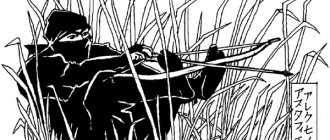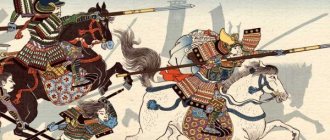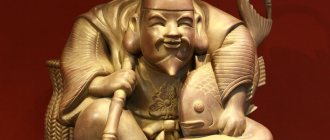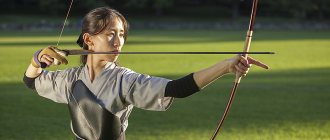It seems that when the Japanese want to do something, they go the “total immersion” route, buying the latest gear and equipment so that they can look like seasoned professionals before their first and perhaps only lesson. This usually reflects the manifestation of the important Japanese concept of katachi (form), the rough equivalent of which is the formula “It’s not what you do, but how you do it.” It is not uncommon to see Japanese people of any age standing on a platform waiting for a train or in front of a building on the street, doing stretches with an imaginary golf club in their hands. One of the latest hobbies of young Japanese women is mountain climbing, naturally in fashionable gear.
Peculiarities
In Japan, there is a special government program aimed at promoting sports and a healthy lifestyle. Schoolchildren and students are required to attend physical education classes, and adults go to gyms, sports grounds, and do fitness. Every year on the second Monday of October, National Health Day is celebrated - mass sporting events, gymnastics, and exercises are held throughout the country.
Physical Education Day in Japan
Japan is strongly associated with martial arts. They have a long history here. Martial arts as types of wrestling began to stand out in the Kamakura era, that is, from the end of the 12th to the first half of the 14th century.
Thus, the Land of the Rising Sun laid the foundation for many sports that later became popular throughout the world: aikido, judo, kendo. Kyujutsu, the art of wielding a bow, became an important activity for samurai.
The so-called inoimono - hunting with dogs - was also important. But sumo deserves special attention - this is the most important national sport according to the professional sumo association.
Japan actively participates in global sporting events, and the Summer Olympic and Paralympic Games in 2021 will be held in Tokyo. Let us also remember that 2021 was the year of Japan in Russia, and throughout the year Japanese delegations came to our country, organizing performances and master classes in national sports.
So, for example, the most active sports participant was the Japanese martial arts house Nippon Budokan. There were also performances by athletes in yabusame - horse-mounted archery.
There are other sports that are practically unknown in the rest of the world, but popular in Japan:
- Fukia is a direction in darts where athletes shoot from a blowgun.
- Gateball is a type of croquet.
- Japanese kickboxing is a type of kickboxing based on the rules of taibo, but with different principles of counting and does not allow hitting with elbows.
- Spochan is a type of fencing sport using various types of edged weapons.
National treasure
Speaking about the national sport, of course, it is necessary to dwell in more detail on sumo. It is interesting that initially it was not so much a sporting competition as a religious rite of the Shinto tradition, held in temples. It could also be associated with beliefs: if, for example, a peasant and a fisherman competed, and the first one won, then this meant that a fruitful year was ahead.
Sumo as an independent wrestling arose back in the 8th century. There is a belief that people inherited it from the gods: it was according to these rules that the gods fought among themselves in the struggle for island territories.
The fight takes place between two fighters. They compete in a special round ring, which is located about a meter high. The diameter of the circle is always the same - 455 centimeters.
The ring is made of special clay; it is also covered with tatami or sprinkled with sand to make it easier to adhere to the surface, as well as to quickly determine the loser. The rules are simple: the loser is the one who first touches the floor with any part of the body other than the feet, or goes outside the ring. During a fight, you cannot hit the nose, ears, eyes, genitals, choke, grab hair, or hit with fists.
In sumo there is an extensive vocabulary of terms, grip techniques, strategic and tactical lines of behavior. There are a lot of rules that have remained traditional for centuries. These include clothing: judges still dress in the kimonos of nobles at court who lived in the 14th century.
Sumo referee clothing
The wrestlers' clothing is also strictly regulated: they only wear a special nine-meter belt, 80 cm wide. This belt is wrapped around the stomach and between the legs in a special way, and the knot is located behind the back. Wrestlers are also known for their characteristic ponytail hairstyles, which also have a practical purpose - they protect the head in case of a fall.
Another feature of athletes is their heavy weight, which sometimes reaches 250 kilograms. Each weight has advantages and disadvantages: let’s say, in addition to the obvious advantages, a heavier fighter has a main disadvantage - less agility and flexibility. To become a professional, a sumo wrestler needs more than one year of intense training in harsh conditions.
Sumo has long spread throughout the world. More and more new directions of this sport are appearing, and even girls are becoming fighters. However, the Japanese themselves are very conservative in this regard - only men are allowed into the ring, as many years ago.
Only in the Land of the Rising Sun can sumo competitions be considered professional - in all other countries amateur athletes compete.
An excerpt characterizing Sports in Japan
- What's wrong with you, Count? – the countess asked in a surprised and compassionate voice. - What? What? For what? “Don’t ask me,” Pierre said and looked back at Natasha, whose radiant, joyful gaze (he felt this without looking at her) filled him with its charm. – What are you doing, or are you staying in Moscow? – Pierre was silent. - In Moscow? – he said questioningly. - Yes, in Moscow. Farewell. “Oh, I wish I were a man, I would certainly stay with you.” Oh, how good it is! - Natasha said. - Mom, let me stay. - Pierre looked absently at Natasha and wanted to say something, but the countess interrupted him: - You were at the battle, we heard? “Yes, I was,” answered Pierre. “Tomorrow there will be a battle again...” he began, but Natasha interrupted him: “What’s the matter with you, Count?” You don’t look like yourself... - Oh, don’t ask, don’t ask me, I don’t know anything myself. Tomorrow... No! Goodbye, goodbye,” he said, “a terrible time!” - And, falling behind the carriage, he walked onto the sidewalk. Natasha leaned out of the window for a long time, beaming at him with a gentle and slightly mocking, joyful smile. Pierre, since his disappearance from home, had already been living for the second day in the empty apartment of the late Bazdeev. Here's how it happened. Waking up the day after his return to Moscow and meeting with Count Rostopchin, Pierre for a long time could not understand where he was and what they wanted from him. When he was informed, among the names of other people who were waiting for him in the reception room, that a Frenchman was also waiting for him, bringing a letter from Countess Elena Vasilievna, he was suddenly overcome by that feeling of confusion and hopelessness to which he was capable of succumbing. It suddenly seemed to him that everything was over now, everything was confused, everything had collapsed, that there was neither right nor wrong, that there would be nothing ahead and that there was no way out of this situation. He, smiling unnaturally and muttering something, then sat on the sofa in a helpless position, then stood up, went to the door and looked through the crack into the reception area, then, waving his hands, returned back, I took up the book. Another time, the butler came to report to Pierre that the Frenchman, who had brought a letter from the countess, really wanted to see him even for a minute and that they had come from the widow of I. A. Bazdeev to ask to accept the books, since Mrs. Bazdeeva herself had left for the village. “Oh, yes, now, wait... Or no... no, go and tell me that I’ll come right away,” Pierre said to the butler. But as soon as the butler came out, Pierre took the hat that was lying on the table and went out the back door from the office. There was no one in the corridor. Pierre walked the entire length of the corridor to the stairs and, wincing and rubbing his forehead with both hands, went down to the first landing. The doorman stood at the front door. From the landing to which Pierre had descended, another staircase led to the back entrance. Pierre walked along it and went out into the yard. Nobody saw him. But on the street, as soon as he walked out the gate, the coachmen standing with the carriages and the janitor saw the master and took off their hats in front of him. Feeling eyes on him, Pierre acted like an ostrich that hides its head in a bush so as not to be seen; he lowered his head and, quickening his pace, walked down the street.
Other types of wrestling
At the same time, Japan is the birthplace of other martial arts besides sumo:
- Judo - the main technique of this fight is that the fighter uses the force and energy of the opponent’s blow to his advantage. Judo is included in the list of Olympic sports. The largest: students train here and professionals perform.
- Kendo is fencing with bamboo swords. In this case, opponents are dressed in specially protected clothing made of cotton or varnished material. The citadel of kendo masters is Tokyo's Budokan Hall.
- Karate - invented by Okinawan peasants who were forbidden to carry weapons, this sport is now known throughout the planet. The practice is based on the concentration of force - to such an extent that true masters are able to destroy bricks or boards stacked in a column with their hands or feet. Karate achieved particular popularity only in the early 1920s thanks to the recognized fighter Motobu Teki.
- Aikido - during a fight, opponents also concentrate their strength and try to use the opponent’s strength to their own advantage. People who practice aikido consider it primarily an excellent means of maintaining excellent shape.
- Kyudo is a meditative archery practice aimed not only at defeating an opponent, but also at one’s own self-improvement on a spiritual level. Kyudo is sometimes called “standing Zen.”
Modernity
But the Japanese are not engaged in just one fight - this is proven by both official statistics and real facts. The answers to the question about the most popular and favorite sport among local residents may surprise the reader. Here's what's popular among the Japanese:
- baseball – 52%;
- football – 23%
- sumo – 19%;
- golf – 15%;
- boxing – 10%;
- motorcycle racing – 9%;
- wrestling – 7% (the rest of the respondents chose another sport or found it difficult to answer).
Golf leads the way in terms of the number of newly registered athletes - both men and women - followed by cycling and boxing.
In modern Japan, there really is a real baseball cult - it came here from the USA, and now almost every resident has a favorite and native team. In the summer and spring there is a championship between university students, and in professional sports there are twelve teams, the recognized leaders among which are the Hanshin Tigers and the Yomiuri Giants.
Hanshin Tigers
Football in the Land of the Rising Sun is also no less popular than at home, in Europe. Back in the 6th century, there was a similar game here called “kemari”. And football in the usual sense came here in 1873 thanks to the British naval captain Douglas - he showed it to the students of the Naval Academy in Tokyo, and they liked it. Already in 1904, the first international game took place between Japanese students and foreigners temporarily living on the islands.
The J. League was founded in 1993, and now it has 28 teams. Every time Japan participates quite successfully in the World Cup, and the World Cup in Russia in 2021 was no exception.
Another European activity that is so loved by Japanese athletes is golf. Japan ranks second after the United States in terms of the number of golf courses in the world.
In recent years, winter sports have also become increasingly popular: alpine skiing, skating, and snowboarding. There are more and more ski resorts and skating rinks in northern Honshu and on the island of Hokkaido, and they attract thousands of people, both professionals and amateurs.
Links
- SPORT // Japan from A to Z. Popular illustrated encyclopedia. (CD-ROM). - M.: Directmedia Publishing, "Japan Today", 2008. - ISBN 978-5-94865-190-3.
This is a draft article about Japan. You can help the project by adding to it. This is a draft article about sports. You can help the project by adding to it.









